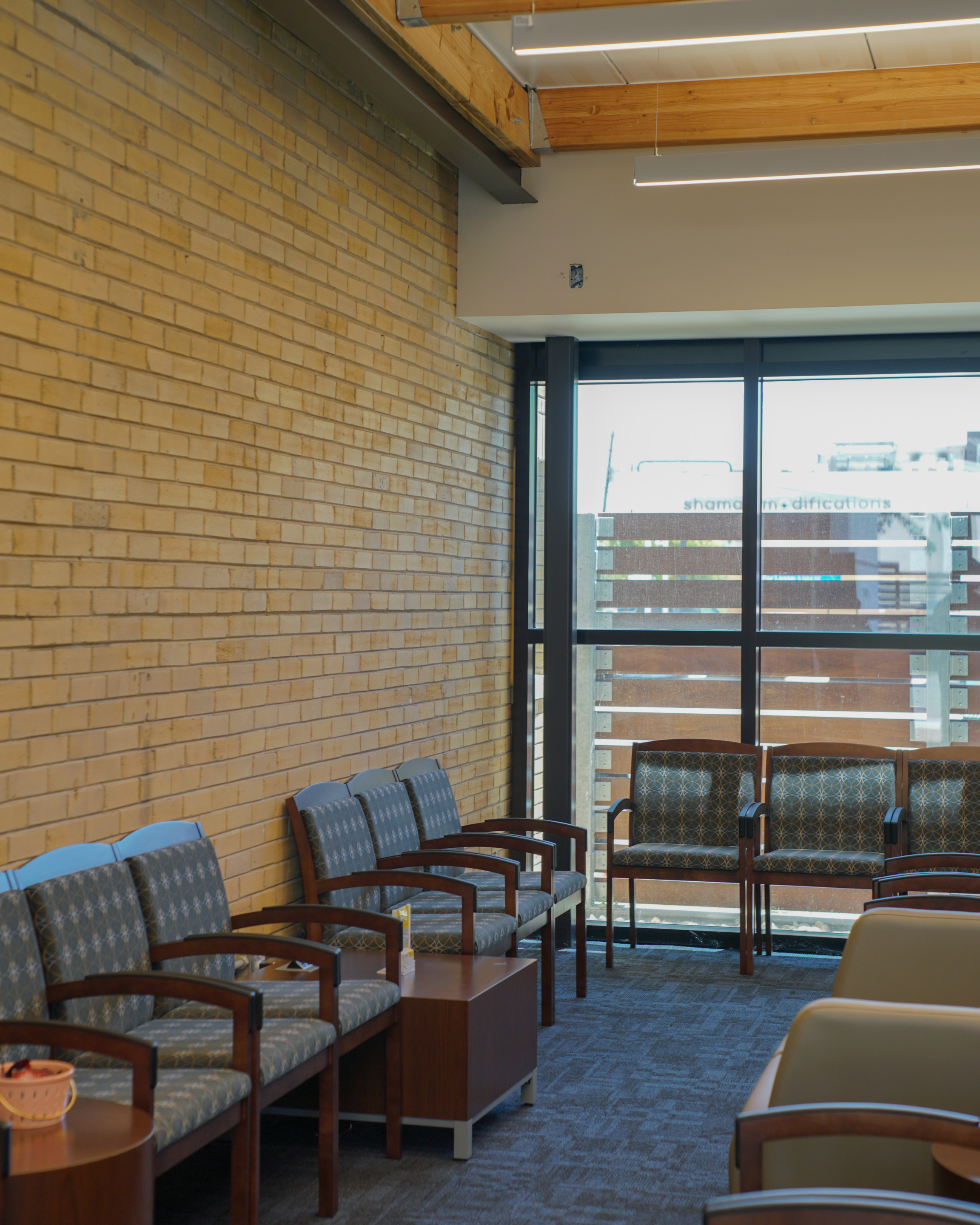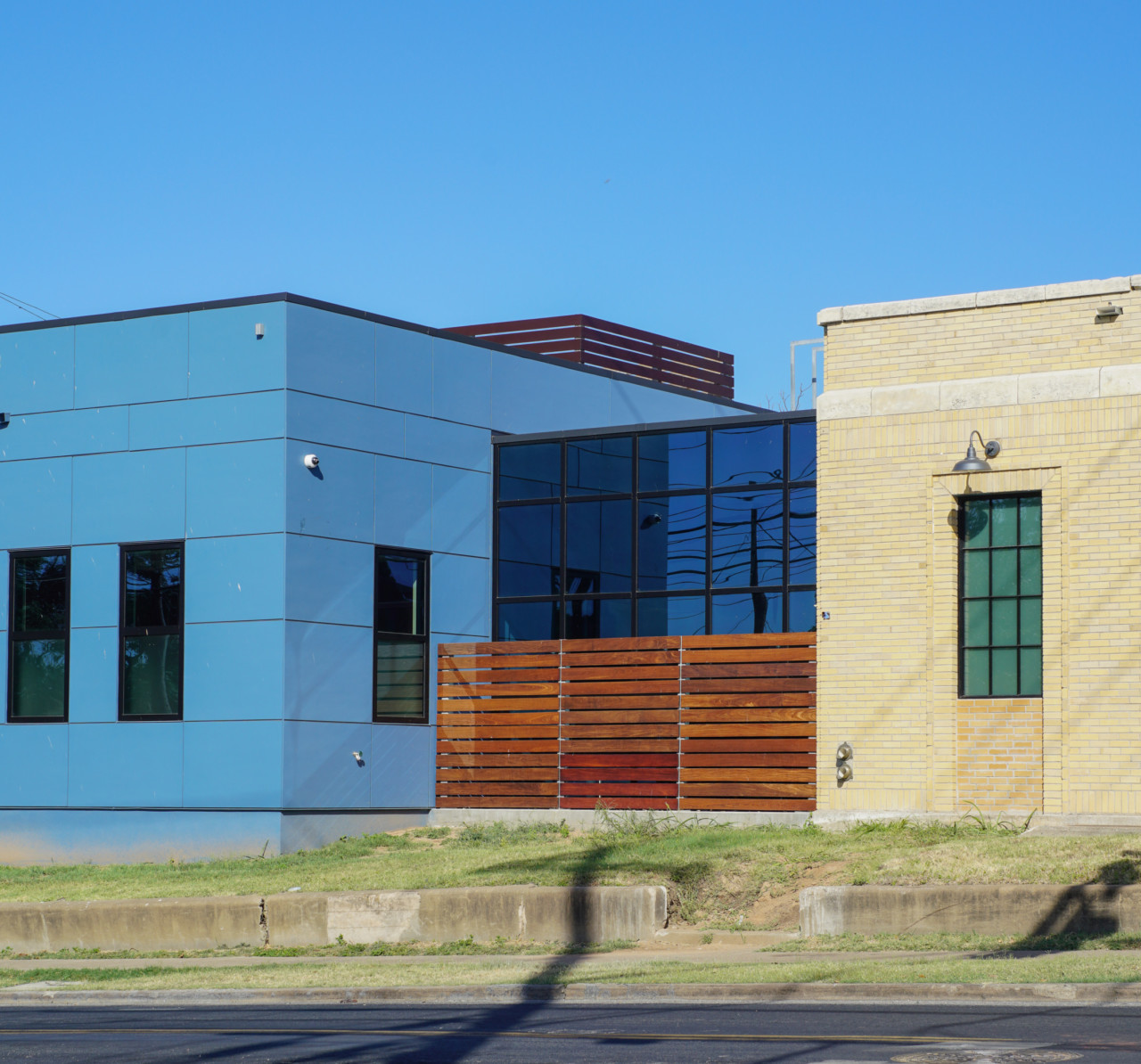There’s a rapid timelapse happening at the intersection of East 7th and Chicon streets in East Austin, Texas: Low-slung industrial buildings sprout into residential blocks, little wood-frame houses morph into fancy restaurants, and patio umbrellas and trees appear where there used to be only patchy sidewalks. On the southwest corner, the Planned Parenthood clinic that has provided this neighborhood with healthcare services for almost 50 years is getting its own makeover, stepping into the light as part of the new Austin.
Planned Parenthood first arrived on this corner in 1973, when it began leasing a brick utility building from the City of Austin for a dollar a year. Initially buoyed by Richard Nixon’s signing of Title X, which directed federal funding toward family planning services, the clinic has offered essential reproductive healthcare for three generations and counting. That care includes birth control, emergency contraception, breast and cervical cancer screenings, trans-competent care, STI testing and treatment, family planning, and pregnancy testing. (Not abortions: Until the recent U.S. Supreme Court ruling in Dobbs v. Jackson Women’s Health Organization overturned Roe v. Wade, patients seeking abortions were directed to other Planned Parenthood locations.) For many clients, this care is the only medical treatment they receive. “It’s just like any other doctor’s office,” architect Donna Carter, who leads Carter Design Associates, told AN. “But in a country that does not have a national health service, where access to a primary care physician can vary drastically from state to state, Planned Parenthood has always understood that there are barriers to that primary care and that many of their clients are really vulnerable within a traditional healthcare setting.”

If Planned Parenthood clinics are often located in weird places—in a strip mall, off a highway, over a Mexican restaurant—this is due in part to economic forces. Planned Parenthood serves predominantly low-income communities, so these locations are the best available real estate for the work. But the cultural tangle of American attitudes about sex and sexual healthcare also plays a role. “For a long time, Planned Parenthood and other healthcare providers felt like our locations needed to feel secretive,” Autumn Keiser, director of marketing and communications for Planned Parenthood of Greater Texas, said. Times are changing, for better and for worse. Even as the nation grapples with the overturn of Roe v. Wade, said Keiser, “it’s not healthy for sexual healthcare to be hidden. We want to embrace our presence.” The bright blue walls of the remodeled 7th Street clinic—once one of those weird places—do double duty, presenting the new, polished face of Planned Parenthood and protecting its patients and staff.
Polishing the existing clinic took some imagination. The original brick utility building, of uncertain origin and uncertain utility, had undergone multiple ad hoc additions. “We did such good work there for so many years and it was a dear location for so many people,” said Keiser, “but…” The biggest addition was an old prefabricated metal building with low ceilings and no windows, and uneven floor levels were covered by makeshift ramps. Records were kept in a “horrible little shed”: secure but cobbled together. “I know a lot of people imagine Planned Parenthood clinics as dingy and run-down,” Keiser said, “and that affects how people perceive the quality of services, which is so wildly out of alignment with what we provide, the depth of experience that our clinicians have.” The mandate was to update the clinic to reflect that high standard of care and to do it with careful attention to cost, as the renovation was funded by private donations.
Another goal was to keep the renovation quiet. The City of Austin’s site development process typically requires sending out notices to the neighborhood. “We didn’t want to stir up trouble,” noted project architect Abby Lawson. Keiser is more direct: “We’re in the crosshairs politically.” A state law, SB 22, passed in 2019, would have prohibited the City from extending its lease to Planned Parenthood. The City worked with clinic leadership to get an extended lease in place prior to the passage of the bill, but as Keiser notes, the clinic’s clients are still a target. By keeping the existing foundation and parking lot and limiting the size of the addition, the architects were able to steer the project through permitting without the requirement of sending out those notifications.
The need for privacy and security shaped the design. “They need to make sure that their clients feel safe coming here,” said Lawson. “So how you communicate that physically in a building is interesting. It’s actually in conflict with Austin’s Subchapter E requirements,” which dictate how buildings on major transit corridors meet the street. “We had to provide a lot of glass on both street-facing sides, which is exactly the opposite of what the clinic wanted, which was to turn its back on the street and be more open to the side that’s less public.”
The architects proposed a simple scheme: Keep the brick building, demolish the additions, and build atop the existing foundations to re-create the existing plan. At the same time, they could bring in more light, add more room for ADA clearances (and for elbow room in general), and create a more welcoming environment for their clients. The new additions flank the existing structure, echoing its massing. The lines of the Hardie panels pick up on the lines of the brick, and the blue offsets the pale yellow of the Austin Common brick. The buildings are separated by glass windows that allow filtered light in while protecting privacy: Wood slats protect one section, frosted windows another. The hub of the building is a bright reception and waiting area, enlivened by pink and blue walls. (Pink represents the activist side of Planned Parenthood, blue the healthcare side.) Exam rooms are small but comfortable, two of them lit by high windows, and two are windowless for patients who prefer even more privacy. There’s room for a lab and a pharmacy and for staff “to stretch their arms and not hit a wall.”
To be clear, the clinic’s healthcare offerings are not affected by the recent Supreme Court ruling. But Keiser remarked: “There’s a lot of fear and confusion. The people who walk in this door need abortion care from time to time. Right now, clients are coming to us wanting an IUD, because even though they’re on birth control pills, IUDs are more effective and last longer, and this is the last time they want to consider being pregnant.”
Architecture can’t address those concerns, but it can make the pursuit of care less stressful. Said Carter, “It feels like you’re going into a nice space and people are going to greet you and ask, ‘How can we help?’”
Jessie Temple is an architect in Austin.
